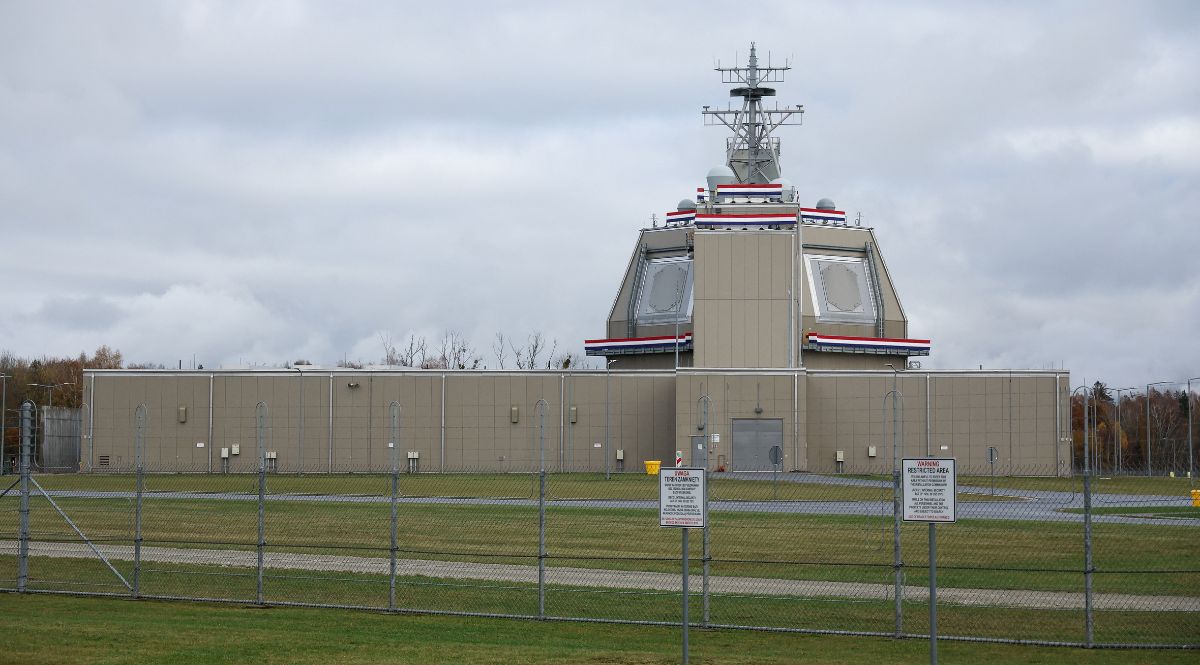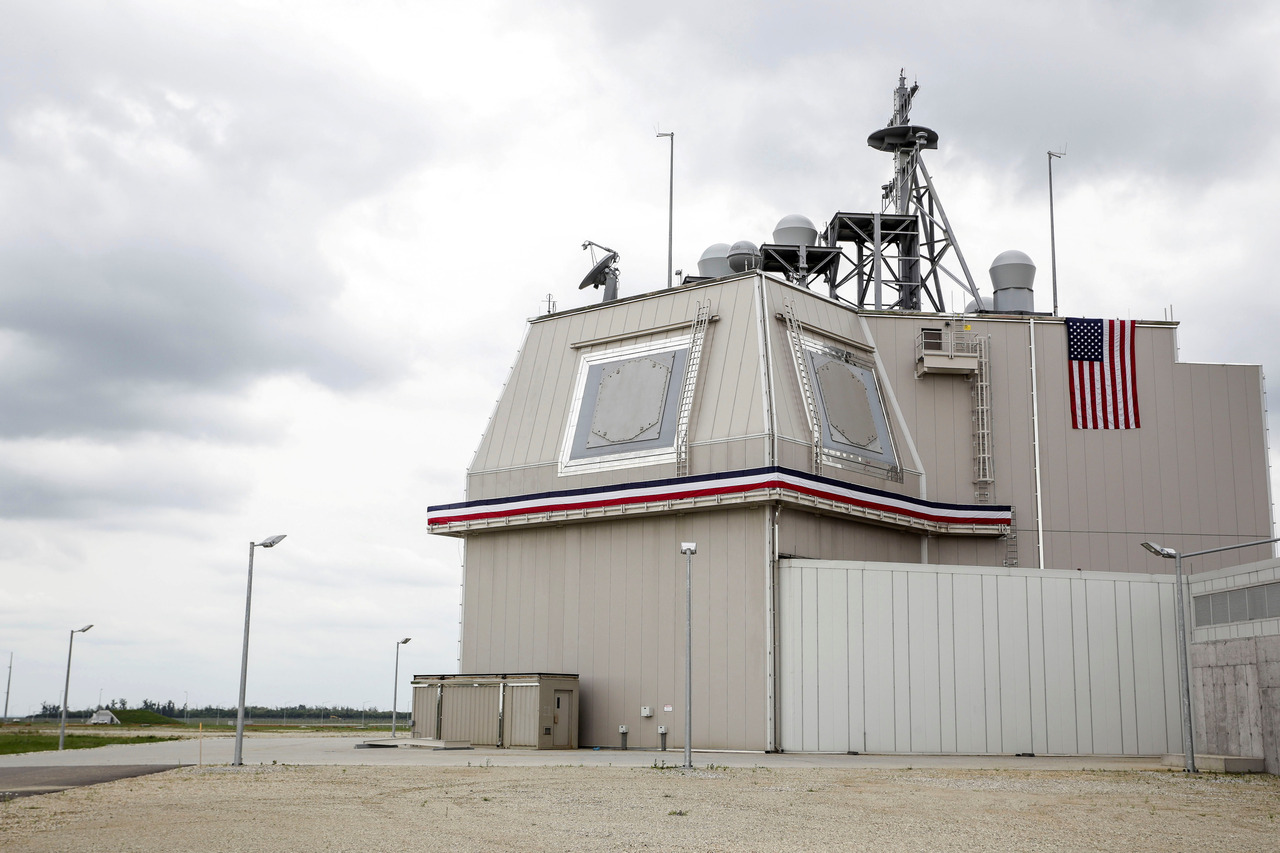U.S. Missile Defence Base in Poland Now Officially in NATO's Structures
On 13 November, the U.S. missile defence installation in Redzikowo, Poland, was officially transferred to NATO. The facility with an Aegis Ashore system reached operational capability in December 2023 as a unit of the U.S. Navy, and now is formally subordinated to the command and control structures of NATO. The American base is an important U.S. investment in the broader missile defence architecture in Europe. This is the end of the last phase of this project initiated by the Barack Obama administration in 2009 and NATO at its 2010 summit. With the second Trump administration, the existing potential of the European Phased Adaptive Approach (EPAA) system to respond to Russian missile threats might be accompanied by many political and technical challenges.
 Kacper Pempel / Reuters / Forum
Kacper Pempel / Reuters / Forum
What types of threats was the system developed to defend against?
The EPAA was designed to intercept a limited salvo of Iranian ballistic missiles threatening European NATO countries and U.S. bases in Europe. Obama’s project differed from the assumptions of the original George W. Bush National Missile Defense (NMD) of only the continental U.S. and to intercept intercontinental missiles from Iran and North Korea. The successor project of the EPAA was based on the priority of European area defence against short-, medium-, and intermediate-range ballistic missiles, which Iran already possessed or was developing. Therefore, plans for silos in Redzikowo with Ground Based Interceptors (GBI) was replaced by a ground-based Aegis Ashore facility with the SM-3 family of interceptors. Construction of the whole EPAA system progressed in three phases, reflecting the development of the Iranian arsenal over the last decade. According to the U.S. plan during the 2010-2016 period, a long-range radar installation in Turkey was built, cruisers with naval Aegis BMD systems deployed to Spain, and an Aegis Ashore was placed in Romania. The dates of the initial and then full operational capability of the Aegis Ashore in Redzikowo was postponed many times by the Pentagon beyond the originally planned 2018 deadline, mainly due to delays in SM-3 production and construction works. Both the NMD and EPAA project were contentious issues in U.S.-Russia relations, and as a concession in 2012, the Obama administration cancelled the fourth phase, the deployment of SM-3 Blk. IIB interceptors of intercontinental ballistic missiles. Today, Poland may host as many as 24 interceptors of the SM-3 in the Blk. IIA version, optimal against intermediate ballistic missiles (assumed range of 3,000-3,500 km). Since the start of Russia’s full-scale invasion of Ukraine, classified studies were conducted at the Pentagon and NATO HQ on the technical options of using all or individual elements of the EPAA to defend Europe from Russian missiles.
What will the new U.S. administration do with EPAA?
At the moment, it is hard to determine the attitude of Donald Trump and his incoming administration towards the future of the EPAA. For instance, it is not clear whether or when the new Pentagon political leadership will conduct a detailed Missile Defence Review like Trump’s first administration. The “Project 2025” report by Republican policy experts clearly declares the priority of U.S. continental missile defence without any reference to the EPAA. This may reflect differences in the perception of threats from Iran, Russia, China, and North Korea by Republicans, which may include Trump’s cabinet members and close advisors. Moreover, the observed confrontation between Israel and Iran might be accompanied by a resumption next year of Iranian-U.S. tensions. It cannot be excluded in this context whether Iran will decide to build a nuclear arsenal, so the EPAA could become a more important part of U.S. missile defence. This scenario may demand that the U.S. not only maintain the current architecture of the system but also deploy interceptors in the SM-3 Blk. IIB version to Poland. The Trump administration’s commitment to the use of the EPAA as a missile defence system against Russia may prove even more complex. Elements of its command-and-control system, early warning satellites, and ground-based radars seems to be suitable for such a purpose. The limitations of the Polish and Romanian bases are tied to their static and above-ground locations, as well as the small number of SM-3s at both installations (these may also launch SM-6 interceptors of cruise missiles). However, the most politically challenging issue might be the reluctance of some Trump advisors to further antagonise Russia with additional NATO capabilities to intercept Russian cruise and ballistic missiles.
What is the significance of the Redzikowo base for Poland’s security?
The presence of the U.S. military base has been of strategic importance for Poland since the beginning of both the NMD and EPAA projects in the country. Especially important to the Polish calculations has been that any permanent form of U.S. military presence clearly signals to Russia that the country is no longer in the Russian sphere of influence, and that NATO security guarantees also fully apply to all Central and Eastern European allies, on whose territory no significant allied forces were deployed until 2017. Since 2014, the importance of the Redzikowo base in bilateral relations has been changing, receding into the background because of the growing Russian threat and the decisions by the U.S. and NATO to deploy more ground forces in Poland. With Russia’s full-scale invasion of Ukraine, the technical modernisation of the Polish Army with U.S. equipment became a high priority, as is maintaining U.S. military assistance to Ukraine. If there is deep change in the U.S. administration’s attitude to Russia and Europe, with parallel prioritisation of the U.S. continental defence, its base in Redzikowo may gain more importance as an element interlinking the national security of the two allies. Naturally, it would be in Poland’s interest to advocate using Redzikowo and the whole EPAA system to defend against missile threats from Russia. Poland should closely monitor and try to influence future recommendations of the Pentagon and Congress for President Trump on this issue. Regardless of Russia’s rhetoric, it seems also necessary for Poland to monitor whether the Redzikowo base might be the subject of any broader U.S.-Russian compromises or strategic arms control agreements between the two nuclear powers.





